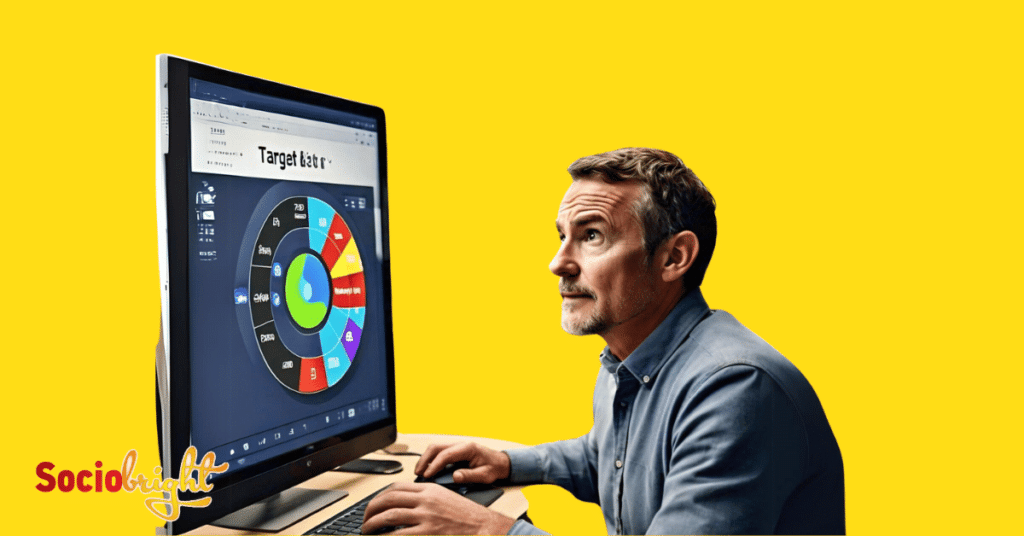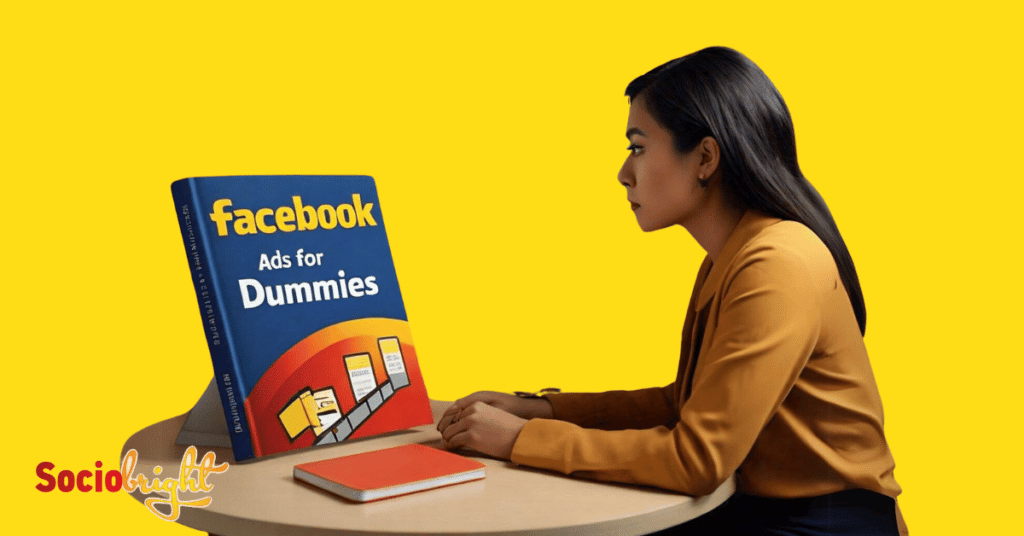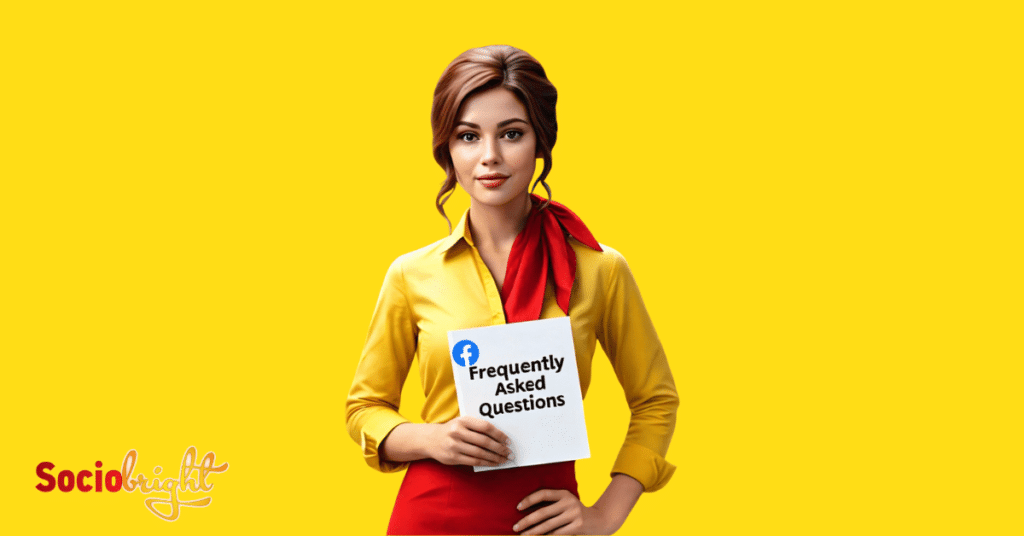Facebook Advertising in 2024: What You Need to Know
As digital marketing continues to gain popularity, Facebook reigns as a powerful platform for advertisers. This article, updated as of July 2024, will explore the benefits of Facebook advertising, from understanding the ad costs to selecting the premier agencies that can amplify your online presence.
We’ll check out effective strategies, compare Facebook’s advertising charges in the USA, and reveal how small businesses can leverage this platform for substantial growth. Additionally, we’ll guide beginners through Facebook advertising, compare it with Google advertising, and look into targeting techniques that promise precision and impact.

12 Benefits of Facebook Advertising
Facebook Advertising has become an indispensable tool for businesses looking to expand their reach and connect with their target audience. Some of the many benefits include:
1. Massive Global Reach
Facebook’s user base is colossal, with billions logging in monthly. This vast audience provides an unparalleled opportunity for businesses to communicate their message to a diverse and engaged demographic.
Pro Tip: To stay ahead of the latest trends and information on Facebook advertising, subscribe to Sociobright’s push notifications.
2. Advanced Targeting Options
The platform’s sophisticated targeting capabilities allow advertisers to pinpoint their audience based on many factors, including demographics, interests, behaviors, and more, ensuring that ads are served to those most likely to engage.
3. Cost-Effective
With a flexible pricing model, Facebook ads offer a cost-effective solution for businesses of all sizes. Advertisers can control their spending with precision, making it an accessible avenue for marketing.
4. Variety of Ad Formats
From image and video ads to carousels and stories, Facebook provides many ad formats to cater to different content strategies and creative preferences.
5. Customizable Campaigns
Advertisers can tailor their campaigns based on specific objectives: increasing brand awareness, driving website traffic, or generating leads.
6. Measurable Results
Facebook’s robust analytics tools allow businesses to track the performance of their ads in real time, making it easier to measure ROI and make data-driven decisions.
7. Mobile Optimization
With most Facebook users accessing the platform via mobile devices, ads are optimized for mobile, ensuring a seamless user experience.
8. Integration with Instagram
Advertisers can extend their reach by simultaneously running campaigns on Instagram, tapping into an additional pool of potential customers.
9. Remarketing Capabilities
Facebook’s remarketing tools enable businesses to re-engage users who have previously interacted with their brand, increasing the chances of conversion.
10. Interactive Features
Ads on Facebook can include interactive elements like call-to-action buttons, making it easier for users to take the desired action.
11. A/B Testing
The platform allows for A/B testing, enabling advertisers to experiment with different ad elements to determine what resonates best with their audience.
12. In-Depth Audience Insights
Facebook provides detailed insights into audience behavior, helping advertisers refine their targeting and content strategy for better engagement.
Understanding Facebook Advertising Costs
The costs of Facebook Advertising vary widely, making it crucial for marketers to understand the factors influencing these expenses. Facebook ads are not one-size-fits-all, and their costs can be as diverse as those of businesses.
The average cost per click (CPC) across industries is about $0.97, while the cost per thousand impressions (CPM) averages around $7.19. However, these figures can fluctuate significantly based on several factors.
One of the primary determinants of ad cost is audience targeting. Narrower audiences tend to be more expensive to reach due to higher competition for ad space among businesses seeking similar demographics. The ad placement—on Facebook, Instagram, or the Audience Network—also impacts the cost. The time of year also plays a role, with costs often increasing during peak shopping seasons or significant events.
Another factor is the bidding strategy. Advertisers can opt for automated bidding, where Facebook sets bids to maximize results based on the given budget, or manual bidding, which requires a deeper understanding of the expected ROI and conversion rates. The ad quality and relevance score, which reflects how well the ad is likely to resonate with the target audience, can also affect costs, with higher scores generally leading to lower costs.
| Factor | Description | Impact on Cost |
|---|---|---|
| Audience Targeting | Specificity of the audience demographics | Narrower audiences often cost more |
| Ad Placement | Where the ad appears (Facebook, Instagram, etc.) | Varies based on the platform |
| Time of Year | Seasonal events and shopping periods | Costs can increase during high-demand periods |
| Bidding Strategy | Automated vs. manual bid setting | Manual bidding requires in-depth ROI knowledge |
| Ad Quality | Relevance score based on expected engagement | Higher scores can lead to lower costs |
Selecting the Right Facebook Advertising Agency
Choosing the right Facebook Advertising agency is a pivotal decision that can dictate the success of your online marketing efforts. Top agencies like LYFE Marketing offer services starting at $500/month for image ads and up to $1400/month for combined image and video ads, emphasizing the importance of custom graphics and advanced targeting.
Influencer Marketing Hub lists agencies such as Sociallyin and Disruptive Advertising, which cater to industries with a minimum campaign size, often starting at $5,000.
When evaluating agencies, consider their expertise in your industry, range of services, and success track record. For instance, Sociallyin prides itself on data-driven strategies and high returns on ad spend, while Disruptive Advertising focuses on strategic approaches to ad services. It’s also important to look at the deliverables included in their packages, such as ad creation, bid management, and optimization.
To find the best agencies and learn other advertising strategies for different platforms, check out these Advertising Guides.
By carefully selecting an agency that aligns with your business goals and budget, you can leverage their expertise to maximize the impact of your Facebook advertising campaigns.

Crafting an Effective Facebook Advertising Strategy
Developing an effective Facebook advertising strategy is vital to achieving desirable outcomes from your campaigns. Some strategies you can take for effective Facebook advertising:
- Combine Facebook ads with content marketing: Use ads to drive traffic to high-quality content that educates and engages your audience.
- Collaborate with influencers: Partner with influencers who resonate with your brand values to extend your reach.
- Use lead ads: Capture leads directly within Facebook to build your marketing list.
- Incorporate video ads: Leverage the power of video to tell stories and capture attention.
- Maximize reach with various placements: Place ads across Facebook’s network to increase visibility.
- Use clear messaging and CTAs: Ensure your ads have straightforward messaging and strong calls to action.
- Personalize ad copy: Tailor your ads to speak directly to different segments of your audience.
By implementing these strategies, you can create a Facebook ad campaign that reaches a broad audience and drives meaningful engagement and conversions. Remember, a successful strategy constantly evolves, so continuously test and optimize your ads for the best performance.
Facebook Advertising Charges in the USA
Facebook advertising in the USA offers a dynamic pricing model that caters to a wide range of budgets and business sizes. The cost can vary greatly depending on several factors, including bidding strategy, target audience, and ad placement.
On average, businesses may expect to pay $0.26 – $0.30 per click or $1.01 – $3.00 per 1000 impressions. It’s important to note that these figures are averages, and the industry’s competitiveness can influence actual costs, the time of year, and the campaign’s specific goals.
For small to medium-sized businesses (SMBs), Facebook advertising remains an accessible platform, with many companies spending between $1.00 – $500.00 per month on their campaigns. Larger companies might allocate upwards of $3000 per month, highlighting the scalability of Facebook’s advertising solutions.
The platform’s ad auction system is pivotal in determining ad costs, as advertisers bid for ad visibility based on their budget and ad performance. The average Facebook ads provider worldwide charges around $137.38 per hour, with US-based agencies charging a similar rate of $136.69 per hour.
Leveraging Advertising on Facebook for Small Businesses
Leveraging Facebook advertising for small businesses can be a game-changer, offering a cost-effective way to reach a vast audience. With over 10 million businesses using Meta advertising, the majority being small to medium-sized, it’s clear that Facebook’s platform is designed to support growth at every level. Small businesses can start with modest budgets, with Facebook recommending a budget based on similar ads, ensuring informed decision-making.
Facebook’s targeting capabilities allow small businesses to narrow their audience by interests, gender, or location, ensuring that ads are seen by those most likely to engage. This precision targeting is complemented by the ability to start, stop, and pause ads anytime, providing full control over ad spend.
The platform also offers insights into ad performance, allowing businesses to see how many people reacted, commented, shared, and clicked on their ads. These insights are invaluable for refining future ad campaigns and improving overall strategy. Resources like the Advertiser Success Center and the Creative Center also offer tips to enhance ad strategy and creative execution.
For small businesses, Facebook ads can drive brand awareness, attract new customers, and boost sales. Companies can use Facebook’s extensive ad creation platform to showcase their products and services through visually appealing ads that resonate with their target audience.

Facebook Advertising Targeting Techniques
Targeting the right audience ensures that your ads are seen by individuals most likely to be interested in your products or services. Facebook offers a range of targeting options, from core audiences based on demographics and interests to custom audiences that allow remarketing to individuals who have already interacted with your business.
One powerful technique is using Custom Audiences for remarketing, which involves targeting users who have previously visited your website or engaged with your content. This strategy can significantly increase the likelihood of conversions as it reaches out to individuals familiar with your brand.
Another effective approach is creating Lookalike Audiences, which allows you to target new users who share similar characteristics with your best customers. This method helps expand your reach and connect with potential customers interested in your offer.
Layered targeting is another advanced technique combining multiple options for more granular reach. This can include targeting based on user devices, leveraging the Facebook Pixel for retargeting, and creating dynamic product ads for personalized experiences.
Launching a Successful Facebook Advertising Campaign
To kick off a campaign that resonates with your audience and meets your business objectives. Start by setting clear, measurable goals. Are you looking to increase brand awareness, generate leads, or drive sales? Your goals will dictate your campaign strategy.
Dive deep into audience demographics, interests, and behaviors. Use Facebook’s Audience Insights to get a granular view of your potential customers. Combine eye-catching visuals with engaging copy that speaks directly to your audience’s needs and desires. Remember, your ad creative is the first impression you make.
Select an ad format that best showcases your message and encourages user engagement, whether a single image, video, carousel, or slideshow—Leverage Facebook’s robust targeting options to reach your ideal customer. You can target based on location, demographics, interests, behaviors, etc.
Decide on a daily or lifetime budget and schedule your ads to run when your audience is most active. Use Facebook Ads Manager to track performance metrics like reach, clicks, and conversions. Continuously test and tweak your ads for optimal results.
Utilizing Facebook Advertising Tools for Maximum Impact
Facebook Advertising tools are designed to streamline the ad creation, making it more efficient and effective. Here’s how you can utilize some of these tools for maximum impact:
- AdEspresso: This tool simplifies the management of your campaigns and allows for A/B testing to determine which ads perform best. Its user-friendly interface and collaboration features make it a favorite among marketers.
- Hootsuite Social Advertising: Manage organic and paid content, create ads, and pull analytics all from one platform. It offers a unified overview of your social media activity, enabling quick adjustments to live campaigns.
- Facebook Ads Manager: The all-in-one tool for creating ads, managing schedules, and tracking performance. It’s essential for running ads across Facebook’s apps and services.
- Dynamic Creative: Improve performance by delivering personalized ads. This feature combines ad components like images and videos in ideal ways for your audience.
Integrating these tools into your Facebook advertising strategy allows you to create more targeted campaigns, save time, and gain deeper insights into your ad performance.

Facebook Advertising for Beginners
Finding a way through Facebook advertising can be daunting for beginners, but with the right approach, it becomes manageable. Here’s how to get started:
- Familiarize Yourself with Facebook Ads Manager: This platform is where you’ll create and manage your ads. Spend time exploring its features and capabilities.
- Learn About Ad Objectives: Facebook offers various objectives like brand awareness, traffic, and conversions. Choose the one that aligns with your goals.
- Understand Ad Placements: Decide where your ads will appear, whether in the news feed, stories, or the audience network.
- Set a Realistic Budget: Start small and scale up as you become more comfortable with the platform and see positive results.
- Create Your First Ad: Choose a simple format and use high-quality visuals and clear messaging. Monitor its performance closely and make adjustments as needed.
Facebook Advertising vs Google Advertising
Online advertising is not just a trend; it’s the future of reaching audiences where they spend most of their time. Google advertising and Facebook advertising are two titans in the digital marketing world, each with its unique approach to reaching potential customers.
Google Ads, known for capturing user intent through search queries, contrasts with Facebook’s targeting approach based on detailed user profiles and behaviors.
| Feature | Google Advertising | Facebook Advertising |
|---|---|---|
| Targeting | Keyword-based, intent-driven | Demographic and interest-based |
| Ad Formats | Text, Shopping, Display | Image, Video, Carousel, Stories |
| User Intent | High (searching for specific info or products) | Varied (browsing social content) |
| Cost | Can be higher due to competition for keywords | Generally lower, with more visual ad options |
| Analytics | Extensive with a focus on search performance | Comprehensive with social engagement metrics |
| Placement | Search results, partner websites | Newsfeed, Stories, Messenger, Marketplace |
Facebook Advertising: Wrapping Up
In this article, we’ve explored many facets of Facebook Advertising, from the 12 benefits to the costs and strategies that make it a versatile tool for businesses of all sizes.
We’ve also examined how agencies can leverage Facebook’s robust targeting options and how beginners can navigate the platform’s advertising tools to launch successful campaigns. The last content update was in July 2024.
Here are some key takeaways to remember:
- Facebook’s massive user base offers unparalleled audience reach.
- Advanced targeting allows for precise audience segmentation.
- Diverse ad formats cater to creative marketing strategies.
- Cost-effectiveness makes it accessible for small businesses.
Follow Sociobright.com to stay updated with cutting-edge news, guides, and tips on digital marketing!

Facebook Advertising FAQs
Here are answers to some frequently asked questions about Facebook Advertising.
What is Facebook Advertising?
Facebook Advertising is a powerful tool that allows businesses to showcase their products and services to a vast audience on the social platform. With almost three billion monthly active users as of January 2023, Facebook ads can appear in various formats across the app, including feeds, Stories, Messenger, and Marketplace.
These ads are typically targeted to users based on demographics, location, interests, and online activity, and businesses can set an ad budget and bid for each click or thousand impressions the ad receives.
How Does Facebook Advertising Work?
It operates on a pay-per-click model, where businesses pay each time users click on their ad. Ads are targeted to users based on their location, demographic, and profile information, and advertisers set a budget and bid for each click or thousand impressions their ad will receive.
Facebook ads often look similar to regular posts but include a “sponsored” label and tend to have more features like CTA buttons, links, and product catalogs.
How Can I Create a Facebook Advertising Campaign?
Creating a Facebook advertising campaign involves selecting an objective, defining your audience, setting a budget, and designing your ad. You can use tools like Meta Ads Manager for a step-by-step process, which includes choosing an ad objective, targeting options, budget, ad format, and placement.
It’s essential to align your campaign with your marketing goals, whether driving traffic, generating leads, or increasing brand awareness.
What are the Different Types of Facebook Ads?
Facebook offers a variety of ad formats to suit different campaign goals, including Image, Video, Carousel, Slideshow, Collection, Instant Experience, and Lead Generation Ads. Each format serves a specific purpose, from showcasing multiple items in a Carousel to driving conversions with Offers. Advertisers can choose the format that best aligns with their objectives and audience preferences.
How Can I Target My Audience With Facebook Advertising?
Targeting your audience with Facebook advertising involves utilizing Facebook’s detailed targeting options, which include location, demographics, interests, behaviors, and engagement. You can also use Custom Audiences for remarketing and Lookalike Audiences to find people similar to your best customers. Layered targeting allows for ultra-precise audience selection, combining various attributes to reach the most relevant users.
How Can I Measure the Success of My Facebook Ads?
Measuring the success of your Facebook ads involves tracking key metrics such as impressions, reach, engagements, click-through rates (CTR), cost per click (CPC), and return on ad spend (ROAS). These metrics provide insights into how well your ads resonate with your audience and the effectiveness of your ad spend. Regular monitoring and reporting on these metrics are crucial for optimizing your Facebook advertising strategy.
What is the Average ROI for Facebook Advertising?
The average ROI for Facebook advertising can vary significantly across different industries and campaign objectives. However, some sources suggest an average ROI of 152%, with an average conversion rate of 1.85% for e-commerce on the platform. It’s important to note that these figures can fluctuate based on factors such as ad spend, targeting accuracy, and the relevance of the ad content to the audience.
How Can I Optimize My Facebook Advertising Strategy?
To optimize your Facebook advertising strategy, targeting the right audience is crucial, using high-quality ad creatives, and testing different ad elements is vital. Implementing the Meta Pixel on your website for detailed tracking and creating custom audiences based on user behavior can also enhance campaign performance.
Regularly analyzing ad performance data to adjust bids, budgets, and placements can lead to more efficient use of ad spend and improved ROI.
Can I Use Facebook Advertising for B2B Marketing?
Facebook advertising can be effectively used for B2B marketing, with reports showing an average conversion rate of 10.63% for B2B Facebook marketing. The platform allows precise targeting of business decision-makers based on specific industries, job titles, and interests, making it a valuable tool for reaching professional audiences and generating leads.
Can I Use Facebook Advertising to Increase My Website Traffic?
Facebook advertising can significantly increase website traffic by targeting users likely to engage with your content. Optimizing for the traffic objective, compelling ad creatives, and retargeting engaged users can lower costs while driving more visitors to your site. The average price per click (CPC) for Facebook ads is around $1.72, indicating the potential for cost-effective traffic generation.
How Does Facebook’s Advertising Algorithm Work?
Facebook’s advertising algorithm uses a personalized ranking system to evaluate and score every post, ad, Story, and Reel. It considers factors like user interactions, type of content, and predicted time spent on a post to determine the relevance score for each ad. AI has become integral to the algorithm, enhancing content personalization by analyzing user behavior and preferences.
How Can I Use Facebook Advertising to Boost My Posts?
Boosting posts on Facebook is a straightforward way to increase visibility and engagement. By selecting a post from your page and clicking the Boost Post button, you can set a goal, target audience, budget, and duration for your boost. This feature allows you to transform organic content into paid ads, reaching a wider audience and potentially attracting new followers.

